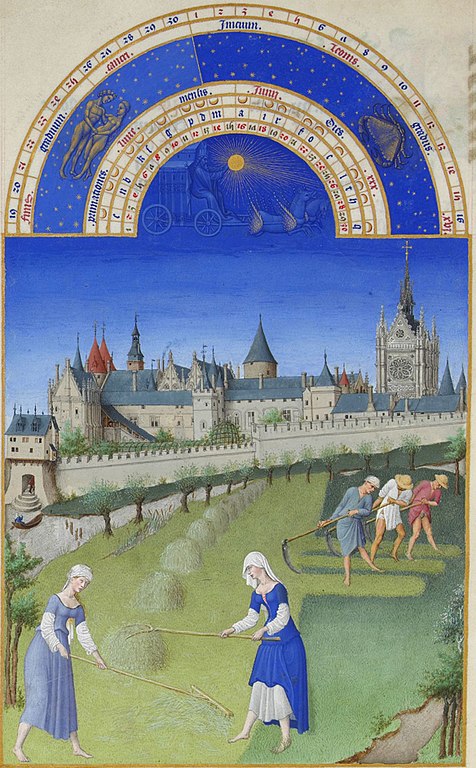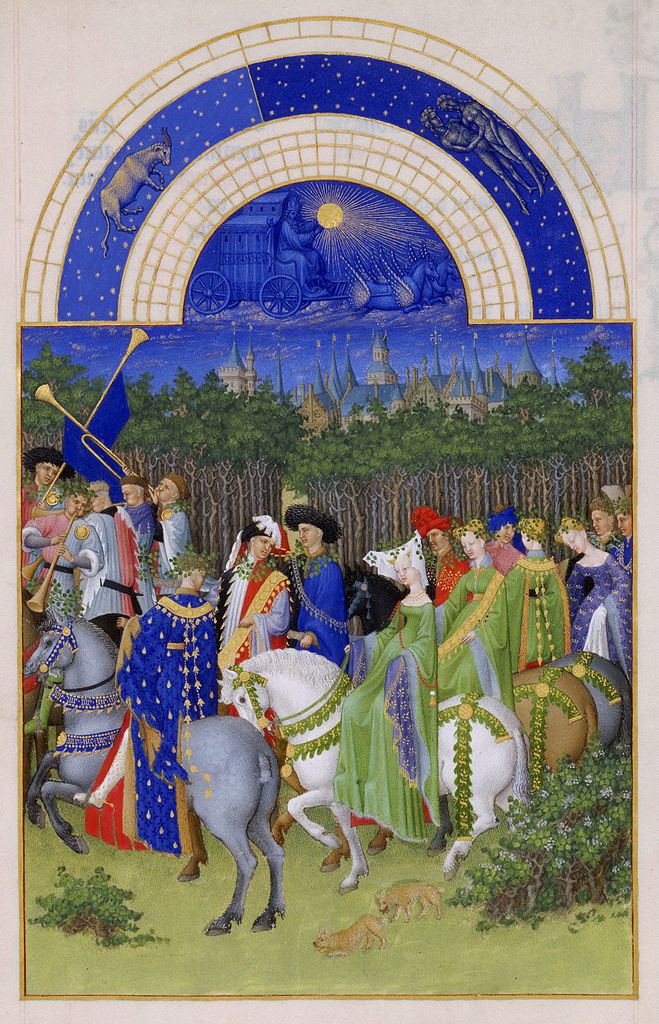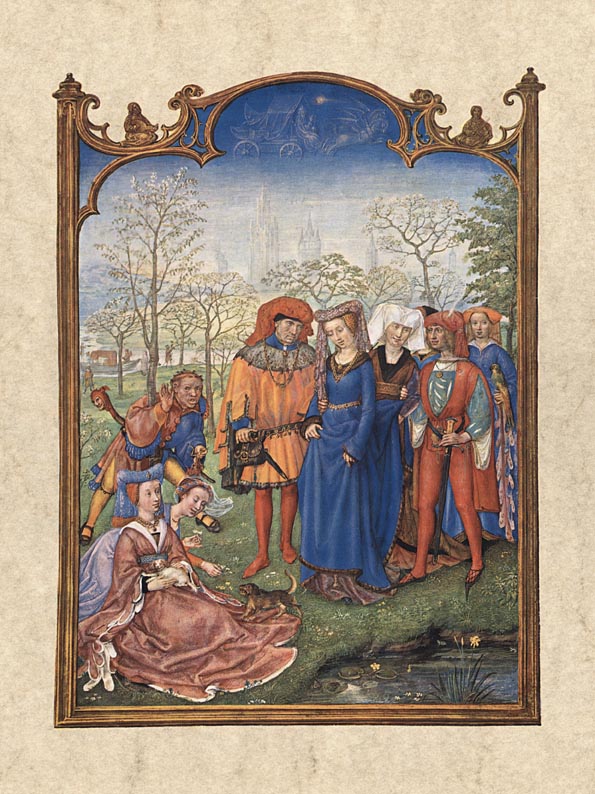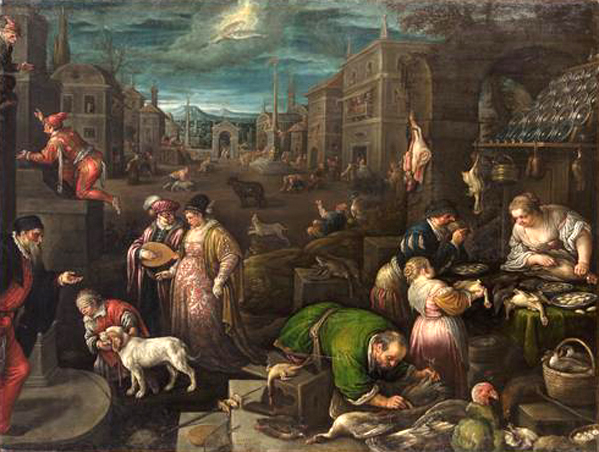
Limbourg brothers (fl. 1402–1416)
Public Domain via Wikimedia Commons
Welcome to July everyone! July is the seventh month in the Gregorian calendar and is named for Julius Caesar. On the old Roman calendar, it was called Quintillis meaning fifth as July was the fifth month on that calendar. It is generally the hottest month in the Northern Hemisphere and the coldest month in the Southern Hemisphere, which is in winter. The old phrase “Dog days of summer” has nothing to do with canines, but an event in the night sky. During the early parts of July–often the most hot and humid–the star Sirius can be seen in the night sky and is part of the constellation Canis Major (the largest dog). The hot days of July then became described as the dog days in reference to the astronomical event.
July has another astronomical event of note, a Supermoon. There are different names for it (Buck Moon, Thunder Moon, Hay Moon etc) This occurs when the Moon is the closest to the Earth making it appear larger than it normally would appear. It can be either a new moon or a full moon. The July Supermoon is often called a Buck Moon since it in this month new antlers appear on the deer buck’s forehead. It turns out that male deer shed their antlers every year and grow new ones.
There are many observances and events, but two biggest national holidays are Independence Day (U.S., 4 July) and Bastille Day (France, 14 July). Independence Day celebrates the Declaration of Independence from Great Britain on 4 July 1776 while Bastille Day in France commemorates the storming of the Bastille in Paris on 14 July 1789. It is considered the start of the French Revolution.
Sources:
The Month of July 2024: Holidays, fun facts, folklore. (2024, June 28). Almanac.com. https://www.almanac.com/content/month-july-holidays-facts-folklore
The month of July. (n.d.). https://www.timeanddate.com/calendar/months/july.html
Wikipedia contributors. (2024b, June 28). July – Wikipedia. https://en.wikipedia.org/wiki/July
Suggested Reading
Brewster, H. (2013). Gilded Lives, Fatal Voyage: The Titanic’s First-Class Passengers and Their World. National Geographic Books.
Marshall, L. (2019). Sinking of the Titanic: The Greatest Disaster At Sea – Special Edition with Additional Photographs. Independently Published.
Rossignol, K. (2012). Titanic 1912: The Original News Reporting of the Sinking of the Titanic. Createspace Independent Publishing Platform.
Wilson, A. (2012). Shadow of the Titanic: The Extraordinary Stories of Those Who Survived. Simon and Schuster.
Titanic News Channel is a participant in the Amazon Services LLC Associates Program, an affiliate advertising program designed to provide a means for sites to earn advertising fees by advertising and linking to Amazon.com.












